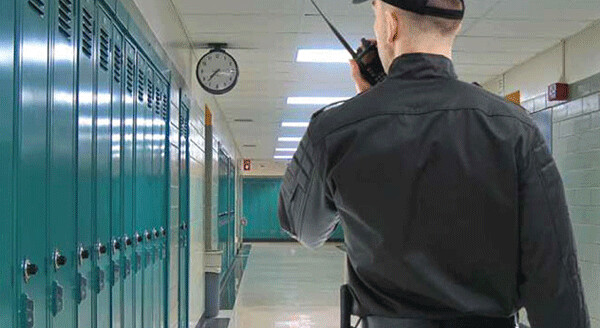News & Articles
Browse all content by date.

The girl is now a seventh grader at Sandy Hook Elementary. In 2012 she was the only survivor of her first grade class of 21 in a mass school shooting. Among the first words by this six-year-old to her parents after the mass shooting: “I’m OK, but all of my friends are dead.” Why do some children have to go through this while others are put in caskets? Because the federal government does nothing about controlling the gun culture.
As early as 1970 we had 1,300 incidents of gunfire in K-12 schools. Since 1970 we have had 111 mass shootings in K-12 schools, with 202 students killed and 454 wounded. In 2018 we had 29 killed and 48 wounded in three mass shootings. Almost all of the shootings were carried out by white boys and men between the ages of 13 and 20. But that is only a small part of the story. Between 1999 and 2017 38,942 school-age children between the ages of 5 and 18 were killed by firearms. How many survivors have said: “I have lost friends to gun violence?” According to the study of the nearly 39,000, 6,464 children ages 5 to 14 were killed for an average of 340 per year. For children ages 15 to 18, 32,478 died from firearms for an average of 2,050 per year. The cause of these deaths: 61% were from assault, 32% suicide, 5% accidental, and 2% undetermined.
What has changed in those last 50 years since the 1,300 gunfire incidents? What has changed in the last 20 years while 38,942 children have died? We just had another school shooting in Colorado at the Highland Ranch Charter School. There will no doubt be another one before this column is printed. There is one minor change in this last shooting. Fewer politicians are repeating the old “thoughts and prayers” routine from thousands of previous shootings because they have been ridiculed for doing nothing about the carnage. How many more children will die before some effective legislation is passed to control the gun culture?
Part of the answer is that we have too many guns. Americans make up only 4.4% of the world’s population but we own 42% of the world’s small arms. The more than a thousand guns found in a Los Angeles mansion in May is a classic symbol of physical excess and mental distress present in our gun culture. Drone pictures of stacks of weapons and boxes of ammunition placed on the driveway of the mansion might serve as a wakeup call. Each member of Congress should be forced to have at least one picture of the firearm harvest on his or her office wall.
From A Young Mother To a Retired Supreme Court Justice: “This Is Crazy!”
The American Psychological Association’s 2018 Stress In America report emphasized that 75% of parents, regardless if they have children in school, say school shootings or a significant threat of one are a significant source of stress in this country. John Paul Stevens spent a third of his present 99 years on the U.S. Supreme Court, having been nominated to a federal court by Tricky Dick Nixon and then appointed to the top court by Gerald Ford. Now retired, he writes that the D.C. v. Heller case on the Second Amendment protecting the rights of an individual to own a gun for protection has had “disastrous practical effects.”
He writes in his latest book: “I think there is no need for all the guns we have in the country and if I could rid of one thing it would be to get rid of that whole gun climate.” He is also distressed at the state of the world and the nation’s politics.
The Highland Ranch school has hit the panic button and will now have two practice active-shooter drills a week from now on for all students. And the school may buy a real panic button that anyone can punch to bring the cops and the fire department. Developed by an Israeli company called—incidentally--Gabriel, this panic button is a wireless sensor complete with cameras and microphones. The firm believes that such instant communications can reduce high death tolls from mass shootings. A starter pack of ten panic buttons runs about $10,000. The U.S. currently has a mass shooting (four or more shot) nine days out of ten on average. In 2018 we had 340 mass shootings. Schools and churches are the biggest customers so far. The Gun Violence Archive, a tracker of mass shootings, questions the claims of the panic button: “Multiple studies have found that schools are dangerous places. The cost of this equipment deprives schools of funds they need for more effective efforts such as counseling services for troubled students. A very high percentage of U.S. young people today identify as the ‘active shooter generation.’ We believe there is some sort of social illness that needs to be dealt with.” The education sector spent $2.7 billion on security devices and services in 2017.
A Columbine High School graduate (and we all know what happened there) bought her Highland Ranch seventh grader a bulletproof backpack after the shooting. She said: “I feel so helpless. I’m supposed to send my kid to school every day in a crapshoot hoping nothing happens and be grateful by the end of the day it’s OK? This is what parents are going through in America right now. It’s crazy.”
Fear Of School And Mass Shootings Are An “Old” Normal
In the first 120 days of 2019 we have already had over 100 mass shootings—and we haven’t had hot summer days yet. Australia had a terrible mass shooting in 1996 when a shooter killed 35 and wounded 23. Australia’s government quickly restricted ownership of pump-action shotguns and high capacity semi-automatic rifles with more than five rounds. In various buyback programs Australians turned over 650,000 assault weapons. Australians must demonstrate a real need for a particular type of gun, must take a firearm safety course, and must meet strict storage requirements for both guns and ammunition.
Just last week Dr. Nikki Stamp, a heart and lung surgeon in Perth, wrote she has practiced for 16 years and has had to deal with only two gunshot wounds, one an accidental shooting and the other a suicide. We have surgeons in metropolitan hospitals who spend most of their days operating on gunshot victims. Americans suffer from mass shootings at more than 11 times the rate of any other industrialized, well-developed country. Maybe it’s time to find out why.
We average 40,000 firearm deaths and 100,000 woundings per year. About 40,000 of us die each year from infections. We know a lot about death by infections and very little about firearm deaths because the federal government spends only 7 cents on firearm deaths for every dollar spent on research of infections. The National Institutes of Health effectively stopped financing research on gun violence in 1996 because of the Dickey Amendment sponsored and passed by Republicans that barred the use of Center of Disease Control (CDC) funds “to advocate or promote gun control.” Research on other public health crises (certainly we are at a major crisis in gun violence!) such as car crashes, tobacco use, cancer, and heart disease has brought a dramatic drop in deaths.
What Kind Of Society Are We Creating With Active-Shooter Drills In Schools?
I spent the years 1958 through 1994 in the Fargo School District, serving as a teacher, personnel director, board negotiator, high school principal, and elementary principal. I remember only one firearm incident. A student who lived close by South High where I was principal went home early one day to pick up a shotgun to hunt ducks south of the school near a swamp. Because it was rather cold, he came back in and strolled through the commons area occupied by dozens of students with the gun over his shoulder. After his explanation, I told him never to do that again. That was it. What would happen today if that incident was repeated?
Erika Christakis, author of “Being Little: What Young Children Really Need From Grownups,” has an article in the Atlantic on active-shooter drills taking place in today’s schools all over the country. She describes one conducted in Florida’s Brantley High School. This was called a “code red” lockdown. Over the PA system a voice announced: “This is not a drill!” Teachers got a text saying there was an active shooter on campus. Students took shelter in classrooms. Many cried hysterically, a few vomited or fainted, and some wrote farewell notes to parents while others texted parents. It was then revealed that it was just a realistic drill. Parents, teachers, and students were furious they had to endure such drills. How should we prepare students for school shootings?
Drills include students being quiet in locked, darkened classrooms. Some schools have police officers play the role of shooters in the halls and cafeterias. Other drills include teaching young students to run in zig-zag patterns to evade bullets. Students are taught to stack chairs and desks “like a fort.” Kindergarten students are also taught new words to the tune “Twinkle, Twinkle, Little Star”: “Lockdown, Lockdown, Lock the door/ Shut the lights off, Say no more.” Over 95% of K-12 schools are running lockdown drills according to Christakis. A Connecticut high school student has won an engineering prize for designing a collapsible, bulletproof wall for use in classrooms.
After studying the effectiveness of lockdown drills, Christakis makes this statement: “There’s scant evidence that exercises to prepare students for shootings are effective. They can, however, be psychologically damaging—and they reveal a misguided view of childhood.” While I was typing the last statement I received BREAKING NEWS. An eight-year old Tennessee boy critically wounded his mother at a college baseball game with a loaded weapon he found in a jeep at the baseball field. He thought it was a toy. Bond has not been set for a 76-year-old man who had a conceal-carry permit. When is this public health disaster going to end?
Every Day In The U.S. 380 People Are Killed Or Wounded By Firearms
Why don’t we try to answer the question why we average 11,000 homicides by firearms each year while Great Britain has only 32 and Japan 8? They don’t seem to kill more with knives or 2x4s either. How many billions do we spend each year burying 40,000 and treating 100,000 wounded in hospitals? How many people suffer permanent life injuries that also require additional billions of dollars of lifetime care? What other developed nations allow civilians to purchase semi-automatic pistols, shotguns, and rifles—and to carry them, concealed or not—on streets, in burger joints, in churches, at high school football and basketball games, in neighborhood bars, and in hospitals treating firearm victims?
We are raising two generations of children growing up in a country that feels lockdowns and active-shooter drills are as required as pledging allegiance to a flag of a country that doesn’t give a damn whether they live or die in a classroom.
| Tweet |


